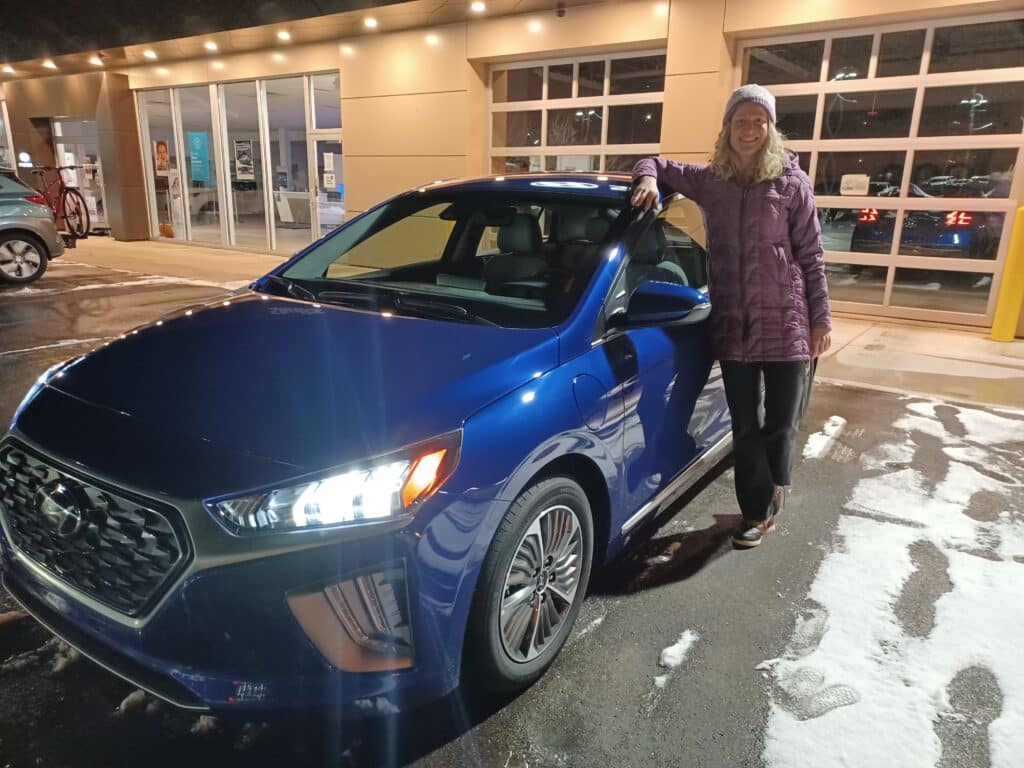When people talk about the benefits of switching to electric vehicles (EVs), there’s a huge opportunity that’s often overlooked: the boon to our overall health and well-being. A recent report from the American Lung Association (ALA) estimates that a widespread transition to EVs could help avoid more than $72 billion in public health costs across the U.S. in 2050. These savings come from things like preventing asthma attacks, premature deaths, and workdays lost due to respiratory illnesses.
The reality is that the fossil fuel vehicles that we’re used to driving are perfect polluting machines. As they burn gas and diesel, they release fine particles of soot and dirt (PM2.5) that can lodge deep in the lungs, causing asthma and other respiratory illnesses, diabetes, developmental problems in children, and even premature death. Other harmful tailpipe emissions include hydrocarbons, carbon monoxide, sulfur dioxide, benzene, and formaldehyde. Carbon monoxide is particularly dangerous to infants and to people suffering from heart disease because it interferes with the blood’s ability to transport oxygen.
ALA report: a widespread transition to EVs could help avoid more than $72 billion in public health costs across the U.S. in 2050.
These burdens aren’t distributed equally. Studies in California as well as in the Northeast and Mid-Atlantic regions show that African-American, Latino, and Asian-American residents, and low-income communities overall, are exposed to far more air pollution from cars, trucks, and buses than other demographic groups. The racial inequities are well documented: in California, exposure to PM2.5 pollution is 43 percent higher among African Americans and 39 percent higher among Latinos, on average, compared to white populations. In the Northeast and Mid-Atlantic, communities of color breathe 66 percent more air pollution from vehicles than white residents, and the shares are even higher for Latinos and Asian Americans specifically.
In many cases, it’s the folks who don’t even own cars that are being exposed to higher levels of vehicle pollution—simply because they’re surrounded by traffic throughout their daily routines. Just living near a major roadway can increase a person’s chance of developing asthma, especially for children who are exposed at an early age and aren’t able to fully develop their lung capacity. An ALA “State of the Air” report released this spring found that people of color are more than twice as likely as white people to live in counties with high particle and ozone pollution days, as well as unhealthy annual particle levels.
By comparison, EVs are veritable clean air dynamos. Because fully electric vehicles release no tailpipe emissions, they eliminate a wide range of contaminants, leading to vast improvements in air quality. Even when the electricity used to charge EVs comes from today’s conventional power mix, EVs are more emissions-friendly, producing less than half the emissions of comparable gas cars over their lifetime. Meanwhile, EVs charged with 100% renewable electricity—typically generated from wind and solar power—have ZERO direct or indirect emissions, making them a win-win for people’s health and for the climate.
Even when the electricity used to charge EVs comes from today’s conventional power mix, EVs are more emissions-friendly.
In total, the recent ALA report found that emission reductions from EVs could prevent more than 93,000 asthma attacks, 6,300 premature deaths, and 416,000 lost workdays in 2050. In addition to bringing positive economic impacts and creating jobs, transitioning to 100% EV use would avoid climate impacts worth $113 billion in 2050. Although most of the benefits would come in big cities like Chicago, Dallas, Los Angeles, New York, and San Francisco, the report notes that 18 states would reap public health benefits of at least $1 billion each.
Here’s the catch: these huge health and economic benefits will only be realized if 100% of passenger car sales are electric by 2040 and all sales of heavy-duty vehicles are electric by 2045. This means we need to rapidly transition to electric for everything from commuter cars and city buses to delivery vans and long-distance cargo trucks. In addition to choosing electric for our personal wheels, we need to support wider government efforts to adopt stricter vehicle emissions standards, build out the nationwide charging infrastructure, provide rebates for EV buyers (especially low-income residents), and invest in electric public transit (including school buses). “The benefits…are by no means automatic,” noted Will Barrett, the ALA’s director of clean air advocacy. “We need leadership, we need policies, we need investments in this transition to zero emissions vehicles at every level.”
Of course, going electric goes hand in hand with a rethinking of our wider mobility needs. The quickest pathway to blue skies—as the COVID lockdowns this spring clearly showed us—is to cut back on our vehicle use altogether. But when that’s not possible, driving electric is a sure bet for cleaning up our emissions act and helping all of our communities breathe easier. Start today by pledging to make your next car electric.















